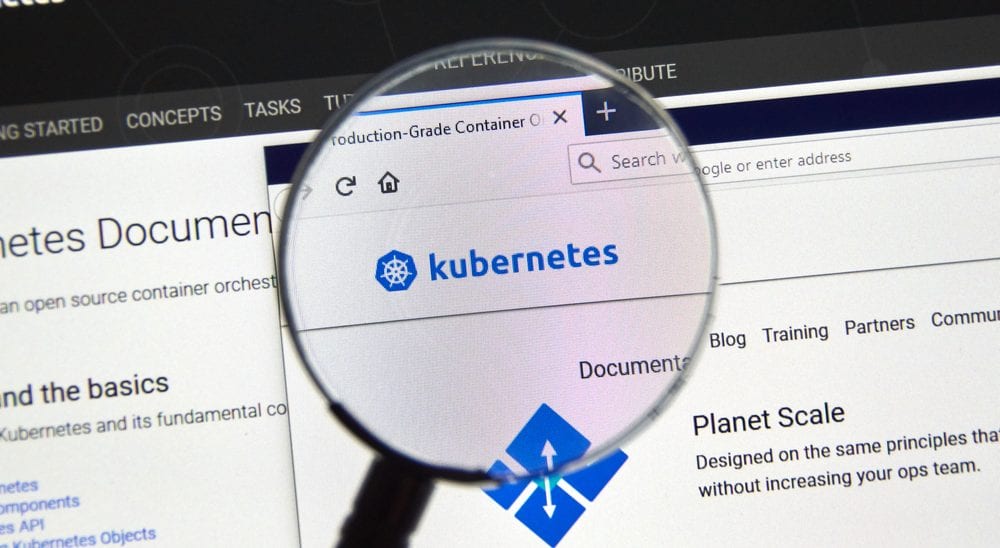Migrating to Kubernetes: Moving to a better world

Michael Cote, Staff Technologist at VMware Tanzu, examines the latest state of Kubernetes in 2020 in our latest contribution.
Kubernetes technology is maturing quickly, with use cases expanding rapidly. Enterprise adoption of the technology has skyrocketed in recent years, from only 27% in 2018 to 48% this year.
VMware’s latest State of Kubernetes 2020 report, examines insights from those responsible for the uptake and use of the technology, shedding light on the scale of internal challenges now faced. According to the findings, more than half of respondents (57%) operate fewer than 10 Kubernetes clusters, and 60% run less than half of their containerised workloads on Kubernetes. Early adopters of container technologies rely on other container orchestration tools (or no orchestration at all), and these environments remain in place.
One thing that has driven this quick uptick in adoption is that Kubernetes’ delivers clear benefits for multiple stakeholders.
A world of multiple happy stakeholders
Of the study’s respondents, 95% reported seeing clear benefits from adopting Kubernetes. The top two benefits were improved resource utilisation (56%), and shortened software development cycles (53%). Resource efficiency is an important KPI for operations teams, while faster development obviously helps developers, making Kubernetes a solution that operations and development teams can agree on. Delivering new, useful software features more quickly, while controlling IT spending, is the key to digital transformation strategies, so it’s clear to see how the benefits extend throughout large organizations.
Other significant positives include enabled migration to the cloud (42%) and reduced public cloud costs (33%). One of the strengths of Kubernetes is that it standardizes how software is packaged, configured, and managed. This makes running your software on-premise and in the cloud much more efficient from an operational stand-point: there’s only one way to do it instead of multiple technologies and practices to learn, follow, and get wrong. Wherever you run Kubernetes you benefit from how it uses resources both efficiently and elastically, helping you control costs.
Moving to a developer-first world
There is a clear shift across all industries now from a preoccupation with infrastructure to a laser focus on application development. Therefore, it’s imperative that companies increase developer productivity, shorten the path to production, and accelerate the cadence of new features and services.
However, the study shows a significant disconnect between what company executives view as the impediments to developer productivity and the way frontline developers see the world. 46% of executives think the biggest impediment to developers is integrating new technology into existing systems. Meanwhile, developers themselves cite waiting for central IT to provide access to infrastructure as a top impediment (29%), while only 6% of executives recognise infrastructure access as an impediment. Such misalignment, combined with the fact that many stakeholders in companies now have a vested interest in the success of Kubernetes, means decision-making has also become too convoluted.
Read More: Software 2.0: What is it and why is it important?
Worryingly, four in ten respondents (40%) cited this lack of internal alignment as a problem faced when selecting a Kubernetes distribution, with complexity also arising both during and after deployment due to a lack of experience (70% of the time) and expertise (67% of the time).
To get the most out of their investment, companies need to prioritize the requirements of developers, as this is the team at the frontline when it comes to ensuring organizational success through Kubernetes.
A new bridge to access opportunities
Kubernetes helps developers get quick and easy access to infrastructure, which is a key attraction to the technology. More than half of developers (55%) stated they have self-service access to Kubernetes resources. Among them, 43% said that with Kubernetes they run their own independent infrastructure, while 28% of their peers are still filing tickets and waiting to get access to the resources they need. Easy access to resources is crucial for developer success, but there are many additional reasons that developers like Kubernetes. These include its inherent resilience, repeatability, flexibility, and visibility. Because Kubernetes is standardizing on these operational attributes, developers can use most all of their time focusing on their apps instead of configuring the infrastructure that runs those apps.
Thus, organisations will also be able to explore new features and approaches to solving their business problems with software, each week. While a day’s, or even week’s, worth of code might seem small, it adds up over time to major changes in the software and, thus, the business using it. Best of all, because these organisations are testing these features out with real-world feedback, the changes are validated with data: their software is proven to be getting better.
The future of Kubernetes
While the organisations surveyed are working through some pain points, as they gain experience and build expertise, respondents clearly believe the journey is worth it.
To help offset a lack of experience in organisations, it can be wise to look for partners with the expertise to help with solution selection. A Kubernetes distribution should be packaged in a way that simplifies enterprise adoption and integrates easily with existing infrastructure. Identifying people to help with deployment and management, and can understand and help balance competing IT priorities, is important for making the future of the technology in organisations a success.
